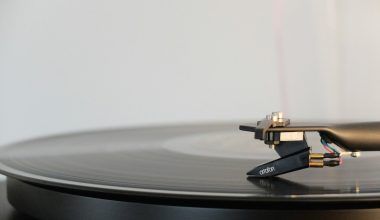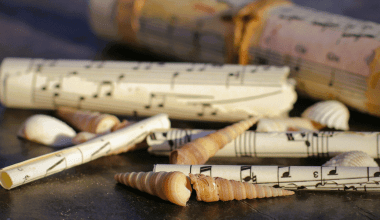Imagine sitting with your friends, each of you holding an instrument. One starts playing a tune, another joins in, and soon, everyone is creating music together without any rules or practice. That’s a music jam!(music jam meaning)
A music jam is a casual gathering of musicians who play music together, usually without a set plan. It’s all about creativity, fun, and the joy of making music. The best part? You don’t need to be a professional musician to join a jam.
Let’s explore the music jam meaning in detail and why it’s such an exciting activity for everyone who loves music.
The History of Jamming
Did you know music jams have been around for a long time? They started in the jazz and blues scenes in the early 1900s. Back then, musicians would gather after concerts to play and experiment with new sounds.
This idea spread across the world and grew into a tradition in many music styles, like rock, reggae, country, and even Indian classical music. Whether it’s on a stage, in someone’s living room, or online, jamming brings people together to create something unique.
Why Do People Jam?
Jamming isn’t just about playing music; it’s about feeling the music. Here are some reasons why people love to jam:
- Freedom to Experiment: There are no rules, so you can try any tune or rhythm.
- Learning from Others: Playing with others helps you pick up new ideas and skills.
- Building Friendships: Jamming is a great way to connect with other music lovers.
- Having Fun: It’s pure joy to create music in the moment.
Different Types of Music Jams
Not all music jams are the same. Let’s look at the types of jams and what makes each one special:
- Free Jamming: Everyone plays what they feel. There’s no structure, just creativity.
- Theme Jamming: Musicians agree on a song, genre, or mood before they start.
- Solo Jamming: You can jam by yourself to practice or discover new sounds.
- Virtual Jamming: With apps and websites, people can jam together from different places.
- Community Jamming: Open mic nights or music circles where anyone can join in.
How to Start Jamming
If you’ve never jammed before, don’t worry! Here’s how you can start:
- Find People to Jam With: Ask your friends, join local music groups, or check out online communities.
- Bring Your Instrument: Guitar, keyboard, drums, or even a tambourine—anything works.
- Start with Simple Tunes: Choose a key or a basic rhythm so everyone can join in.
- Be Open-Minded: There’s no right or wrong in a jam. Just go with the flow!
- Have Fun: Enjoy the music and don’t take it too seriously.
What Happens During a Music Jam?
Jamming is like having a conversation, but with instruments instead of words. Here’s what usually happens:
- Someone starts playing a rhythm or melody.
- Others join in, adding their own parts.
- The music grows and changes as everyone contributes.
- Sometimes, one person takes the lead with a solo.
- The jam ends naturally when everyone feels like it’s time.
It’s an amazing way to create music and share ideas without pressure or rules.
Why Jamming is Good for You
Jamming is more than just fun—it’s good for your mind and body too! Here’s how:
- Boosts Creativity: You’ll think of new ideas and try out different sounds.
- Relieves Stress: Playing music helps you relax and feel happy.
- Improves Teamwork: You learn to listen to others and play together.
- Builds Confidence: The more you jam, the more confident you’ll feel about your music.
Tips for a Great Jam Session
Want to have an amazing jam? Follow these simple tips:
- Listen Carefully: Pay attention to what others are playing.
- Keep It Simple: Don’t play too much at once. Leave space for others.
- Take Turns: Let everyone have a moment to shine.
- Stay Positive: Encourage each other and don’t worry about mistakes.
- End on a High Note: Finish with a strong and exciting tune.
Famous Jam Bands
Some bands are famous for their jamming style. These groups have made jamming a part of their music:
- The Grateful Dead: Known for long, improvised performances.
- Phish: A band that mixes rock, funk, and jazz in their jams.
- Dave Matthews Band: Their live shows often include amazing jams.
These bands show how powerful and creative jamming can be.
Jamming in Different Cultures
Jamming isn’t just a Western idea. It’s a part of many cultures around the world:
- India: Musicians in Indian classical music often jam in “jugalbandi,” a playful musical dialogue.
- Africa: Drumming circles are a form of communal jamming in African traditions.
- Latin America: Samba and other folk styles involve group improvisation.
Wherever you go, you’ll find people jamming in their own unique way.
The Role of Technology in Jamming
Today, you don’t have to be in the same room to jam. Technology has made it possible to jam with anyone, anywhere. Platforms like JamKazam and Soundtrap let musicians connect and play together online. You can even use apps to create beats and loops on your own.
Challenges of Jamming
Jamming can be tricky at times. Here’s how to handle common challenges:
- No Coordination: Start with a key or rhythm to get everyone on the same page.
- Different Skill Levels: Keep it simple so everyone can join in.
- Too Much Noise: Take turns and play softly when needed.
How to Find Jam Sessions
Ready to join a jam? Here’s how to find one:
- Local Music Stores: Check their bulletin boards for jam session announcements.
- Community Centers: Many hold open mic nights or music events.
- Online Groups: Look for forums or social media groups for musicians.
Conclusion: Let’s Jam!
The music jam meaning is simple: it’s about coming together to make music, share ideas, and have fun. You don’t need to be an expert or have fancy equipment. All you need is a love for music and the willingness to explore.(music jam meaning)
Whether you’re jamming with friends, strangers, or online, it’s an unforgettable experience. So grab your instrument, find a group, and start jamming today!
Related Articles:
For further reading, explore these related articles:
- Best Audible Books Ever: Stories You’ll Love to Hear
- Trap Music Meaning: Everything You Need to Know About This Unique Genre
For additional resources on music marketing and distribution, visit Deliver My Tune.






